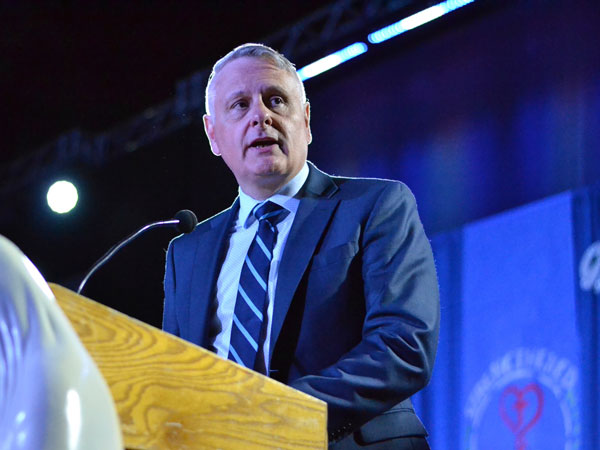
Sometimes Twitter can lead to opportunities. Ecole St. Mary Principal Mark Phaneuf presented for a graduate level class at the University of Regina on Tuesday evening after seeing a tweet from professor Dr. Alec Couros.
The presentation made Phaneuf a guest by Zoom for a class focused on blended learning strategies.
Couros, who is a professor of educational technology and media and director for the Center for Teaching and Learning at the University of Regina, invited Phaneuf with his grad level students.
He shared how the entire educational team at the school are optimizing instructional strategies to connect with students while remaining focused on teaching and learning curriculum.
The graduate course is devoted to online and blended learning and falls under the education, curriculum and instruction umbrella.
“The students essentially learn to develop online courses, to integrate blended learning into their teaching and learning,” Couros said.
“During class we were talking about the definitions of blended learning and so then I put on Twitter,” he explained.
“It was really interesting to be able to present and interact with these grad students who are struggling with the exact same concepts,’ Phaneuf said.
Phaneuf and Couros connected through Twitter.
“I was intrigued so we returned messages and then I asked: ‘do you want to come into my class.’ and that was basically how he got invited to the class,” Couros said.
“I thought what we talked about was really interesting and it was unique,” Couros said. St Mary is an urban high-density school moved to Level 3 (hybrid learning) of the Saskatchewan Safe School Plan at the start of the school year. There are just over 1,000 students at St. Mary in both English and French Immersion programs. Students at the school have an opportunity to participate in online courses, in-person hybrid learning environments or both.
The hybrid-learning model puts students in classrooms for the morning or 60 per cent of the day and at home for 40 per cent of the day.
“We really wanted to put a premium on daily in person interaction between staff and students. With the importance of instruction in daily interaction as well as the relationship between the teacher and the student connections especially during the pandemic was a no brainer to us because it could afford us the opportunity to have students with us every single day rather than every second day,” Phaneuf said.
Phaneuf explained that the model works for St. Mary because it allows both teachers and students to be comfortable working online and in class.
“From what we had seen from March forward, and particularly moving forward we knew that there would be certain groups of people or even individuals that would not be able to come to school,” he said.
Reasons students can’t be in school can be anything from a public health order to personal family struggles. If students and staff were comfortable online, it would be beneficial for everyone.
“If we didn’t do it right at the beginning of the year we would have never forced the issue for people getting into that habit of doing it,” Phaneuf said.
The division also utilizes the Edsby platform through Microsoft Office, which allows teachers, students and parents to communicate and share lessons. Teachers share what is coming up and the platform allows messaging directly between students and staff.
“It is just so rich, parents also have the portal as well so parents can actually see which assignments their children have done, which ones they haven’t done, how well they have done on them and directly interact with staff, teaching staff administration and guidance counsellors through that as well,” Phaneuf said.
Teachers then broadcast their lessons to help bridge the gap between the online and in class sections of the day.
“The student can go home and have a look at it again and maybe get a deeper knowledge to it. And a lot of it is that opportunity to look at it again for the student and really have the opportunity to do so in the afternoon,” he explained.
The entire experience with the hybrid model has evolved and Phaneuf explained it was rewarding because of the ability to build connections.
‘Really we had to respond with little to no predictability, we had to be flexible because we don’t know if it’s going to be a particular individual or group of individuals that is going to be out.”
The model has evolved quickly according to Phaneuf.
“I have been very proud of the students and staff, the students and the parents how they have responded and pulled together because a pandemic will do one of two things, it will pull apart or pull together and I am very proud of our school community the way it has pulled together,”
Couros said the model was unique in Saskatchewan with the mix of both models of learning.
Students in the class were intrigued as well by the way the hybrid model allows for more daily prep time and the reduction of class sizes.
“Because of the model, class sizes were reduced quite a bit,” Couros said.
“You could actually have more teacher attention so you are not dealing with large class sizes of 40 students. You actually have a better student to teacher ratio which means more time that you can actually spend with your teacher.
“I think it makes a lot of sense. “

